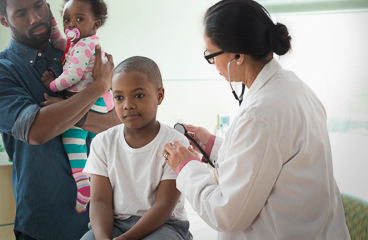
Overview
Many children have minor aches and pains from overuse or injury to muscles and joints. Joint injuries often happen during sports or recreation or from doing chores around the home. An overuse injury can happen when your child puts too much stress on a joint or does an activity that stresses the joint over and over. Examples include using the computer or swinging a baseball bat.
You can take steps at home to help your child's muscles and joints get better. Your child should feel better in 1 to 2 weeks. But it can take 3 months or more to heal completely.
Follow-up care is a key part of your child's treatment and safety. Be sure to make and go to all appointments, and call your doctor if your child is having problems. It's also a good idea to know your child's test results and keep a list of the medicines your child takes.
How can you care for your child at home?
- Do not let your child put weight on the injured joint for at least a day or two.
- Wrap the injury in an elastic bandage. Do not wrap it too tightly. It could cause more swelling.
- Put ice or a cold pack on the sore joint for 10 to 20 minutes at a time. Try to do this every 1 to 2 hours for the next 3 days (when your child is awake). Put a thin cloth between the ice and your child's skin.
- Prop up the sore joint on a pillow when you ice it or anytime your child sits or lies down during the next 3 days. Try to keep it above the level of your child's heart. This will help reduce swelling.
- After 2 or 3 days, you can try applying heat to the area that hurts. Apply heat for 10 to 20 minutes at a time, several times a day. Types of heat therapy include microwavable packs and disposable heating patches. You might also try switching between ice and heat.
- Ask your doctor if you can give your child acetaminophen (Tylenol) or ibuprofen (Advil, Motrin) for pain. Be safe with medicines. Read and follow all instructions on the label.
- Do not give your child two or more pain medicines at the same time unless the doctor told you to. Many pain medicines have acetaminophen, which is Tylenol. Too much acetaminophen (Tylenol) can be harmful.
- After 1 or 2 days of rest, have your child start to move the joint gently. While the joint is still healing, your child can start to exercise using activities that don't strain or hurt the painful joint.
When should you call for help?
Call your doctor now or seek immediate medical care if:
- Your child has signs of infection, such as:
- Increased pain, swelling, warmth, and redness.
- Red streaks leading from the joint.
- A fever.
Watch closely for changes in your child's health, and be sure to contact your doctor if:
- Your child's movement or symptoms are not getting better after 1 to 2 weeks of home treatment.
Where can you learn more?
Go to http://www.healthwise.net/patientEd
Enter W668 in the search box to learn more about "Joint Pain in Children: Care Instructions".
Current as of: July 31, 2024
Author: Ignite Healthwise, LLC Staff
Clinical Review Board
All Ignite Healthwise, LLC education is reviewed by a team that includes physicians, nurses, advanced practitioners, registered dieticians, and other healthcare professionals.

